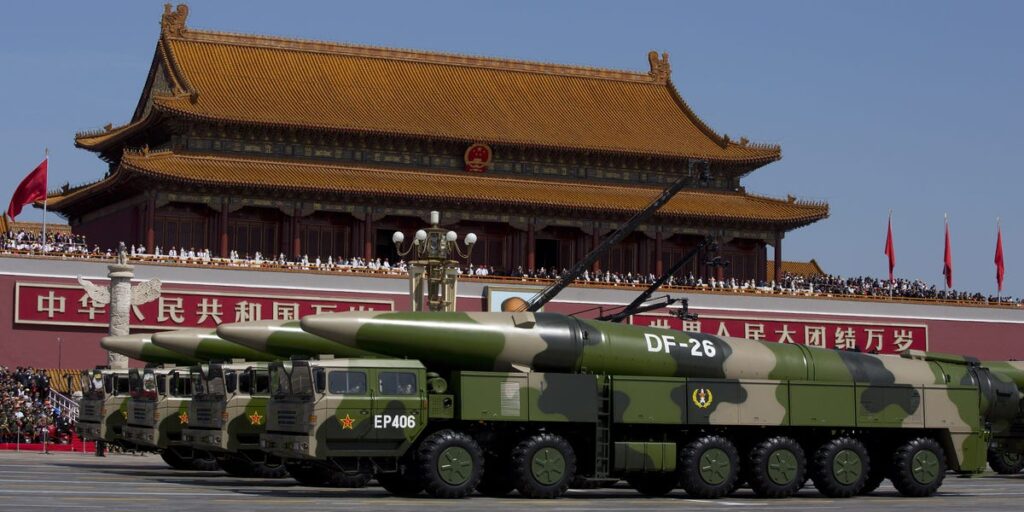China’s missiles are becoming a deadlier problem for the US military due to complex evolutions in the country’s kill chains, according to a top American general.
The Pentagon has been focused on China’s growing arsenal of missiles for years, noting their ranges and stockpiles put the US and its allies in the region at risk should conflict break out. And there are force-multiplying capabilities that make that a more daunting challenge.
Speaking to lawmakers on the Senate Committee on Appropriations last week, Gen. B. Chance Saltzman, chief of space operations of the Space Force, stated that the People’s Liberation Army, China’s military, “has fielded satellite-enabled, space-based targeting of terrestrial forces. This kill web has extended the range and accuracy of PLA weapons to hold US forces at risk.”
Saltzman added that the Space Force has the difficult task of defeating this kill web should the US and China go to war. The “kill web” is something he’s brought up before, characterizing it as a critical concern.
China’s military, the general said back in May, “has developed what we’ve kind of, you know, tongue in cheek, called a ‘kill web,’ and it’s nothing more than a series of hundreds of satellites that are a sensor network that provide real-time updates, targeting quality information of our force.”
China’s embassy in the US didn’t immediately respond to a request for comment on American assessments of its military.
China’s missile branch, the Rocket Force, has been heavily investing in new weapons. Annual reports on China’s military by the US Department of Defense have noted growing stockpiles and launchers.
One of China’s ballistic missiles, the DF-26, has been commonly referred to as the “Guam Express” or the “Guam Killer” because it can reach US forces on the island, which is roughly 3,000 miles from Beijing. It can also be used in an anti-ship role, earning it another nickname: “carrier killer,” like the DF-21D.
Other Chinese ballistic missiles have raised concerns in the Pentagon, including its DF-17 and DF-27 hypersonic missiles, short-range ballistic missiles like the DF-15 that give China the ability to strike Taiwan with relative ease, and intercontinental ballistic missiles like the DF-5s, DF-31s, and newer DF-41s. And the arsenal isn’t limited solely to ballistic missiles, with Chinese cruise missiles also representing a threat.
Last year, in its report on China’s military, the Pentagon assessed that the PLA intended to use AI and machine learning to enhance its missile sensors, which could make them more accurate.
Other capabilities within information-gathering and targeting could improve missile accuracy as well. Reconnaissance drones and satellites could be a key part of the growing kill web, transmitting key information to command and control centers for decisions on how and what to attack.
The kill web is an evolved concept of a traditional kill chain, described as being more interconnected across systems and domains and more resilient to disruption. The US is actively working to expand its own web.
In a statement before the recent Senate committee hearing, Air Force leadership shared that it “recognizes the need to develop interconnected, multi-platform systems of systems that can operate within and across services to create a robust and redundant, long-range kill web capable of delivering effects within the most contested environments.”
That requires, it said, investing in every aspect of the so-called “kill web,” from traditional platforms and communication equipment to AI and weapons systems.
Read the full article here
















